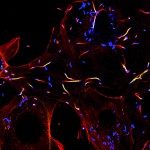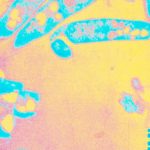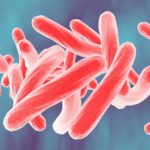Lien vers Pubmed [PMID] – 26019221
Lien DOI – 10.1126/scitranslmed.aab0458
Sci Transl Med 2015 May; 7(289): 289ra85
Inflammation adversely affects the health of millions of people worldwide, and there is an unmet medical need for better anti-inflammatory drugs. We evaluated the therapeutic interest of mycolactone, a polyketide-derived macrolide produced by Mycobacterium ulcerans. Bacterial production of mycolactone in human skin causes a combination of ulcerative, analgesic, and anti-inflammatory effects. Whereas ulcer formation is mediated by the proapoptotic activity of mycolactone on skin cells via hyperactivation of Wiskott-Aldrich syndrome proteins, analgesia results from neuronal hyperpolarization via signaling through angiotensin II type 2 receptors. Mycolactone also blunts the capacity of immune cells to produce inflammatory mediators by an independent mechanism of protein synthesis blockade. In an attempt to isolate the structural determinants of mycolactone’s immunosuppressive activity, we screened a library of synthetic subunits of mycolactone for inhibition of cytokine production by activated T cells. The minimal structure retaining immunosuppressive activity was a truncated version of mycolactone, missing one of the two core-branched polyketide chains. This compound inhibited the inflammatory cytokine responses of human primary cells at noncytotoxic doses and bound to angiotensin II type 2 receptors comparably to mycolactone in vitro. Notably, it was considerably less toxic than mycolactone in human primary dermal fibroblasts modeling ulcerative activity. In mouse models of human diseases, it conferred systemic protection against chronic skin inflammation and inflammatory pain, with no apparent side effects. In addition to establishing the anti-inflammatory potency of mycolactone in vivo, our study therefore highlights the translational potential of mycolactone core-derived structures as prospective immunosuppressants.










